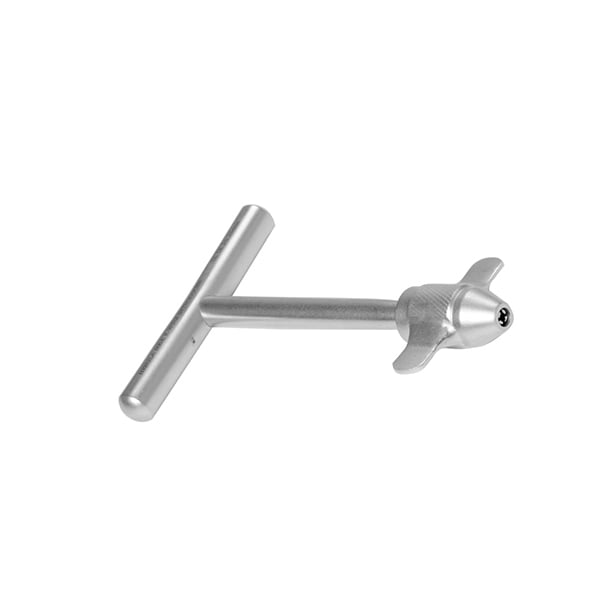
K-WIRE INTRODUCER
Product Details
Product Overview
A K-Wire Introducer is a specialized medical instrument used to guide and secure Kirschner wires (K-wires) in orthopedic and trauma surgeries. These wires are commonly employed for temporary fixation, stabilization, or alignment of fractures, particularly in extremities such as hands, wrists, feet, and ankles. The introducer simplifies the insertion process, ensuring precision and minimizing tissue damage.
Applications
- Trauma Cases: Fracture fixation, especially in small bones.
- Orthopedic Surgeries: Stabilization in reconstructive and corrective procedures.
- Emergency Interventions: Rapid stabilization of injuries in trauma settings.
Technical Details
Material:
- Made of high-grade surgical stainless steel or titanium for durability and sterilization.
- Corrosion-resistant and biocompatible.
Dimensions:
- Compatible with various sizes of K-wires (commonly ranging from 0.6 mm to 3.0 mm in diameter).
- Length and grip designed ergonomically for ease of handling.
Design Features:
- Ergonomic Handle: Ensures a firm grip to reduce hand fatigue.
- Cannulated Shaft: Allows the K-wire to pass smoothly for precise insertion.
- Tip Design: Specially shaped to secure the wire for accurate placement.
Sterility:
- Provided sterile or non-sterile, depending on the manufacturer's choice.
- Can be autoclaved for reuse in some cases (if designed for multiple uses).
Key Features
- Enhanced Precision: Ensures accurate wire placement in trauma and fracture cases.
- Durable Construction: Crafted for rigorous surgical use and multiple sterilization cycles.
- Ease of Use: Lightweight and ergonomic, suitable for prolonged procedures.
- Versatile Compatibility: Works with a wide range of K-wire sizes.
- Safety: Reduces the risk of soft tissue damage during wire insertion.
- Reusable/Disposable Options: Offers flexibility depending on surgical needs.
Benefits
- Improved Efficiency: Streamlines the process of wire insertion, saving valuable time in critical procedures.
- Enhanced Patient Outcomes: Ensures stability and alignment for quicker recovery.
- Cost-Effective: Reusable models offer long-term savings for healthcare facilities.
- Reduced Surgical Fatigue: Ergonomic design supports better handling and control.
- Minimized Complications: Precise placement reduces the chances of misalignment or tissue damage.






